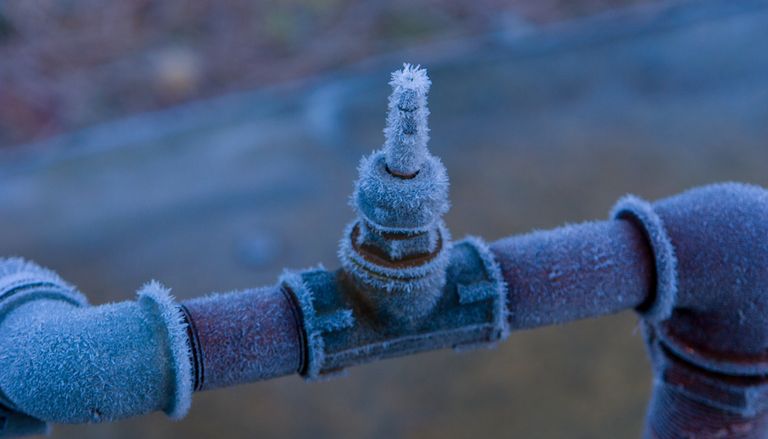Important Tips for Preventing Frozen Pipes in Winter Seasons
Important Tips for Preventing Frozen Pipes in Winter Seasons
Blog Article
Every person has got their unique conception with regards to Preventing and dealing with frozen pipes.

Winter can damage your plumbing, specifically by freezing pipes. Here's how to prevent it from happening and what to do if it does.
Introduction
As temperatures decrease, the threat of icy pipes increases, potentially bring about expensive repairs and water damage. Comprehending just how to prevent frozen pipelines is critical for house owners in cool climates.
Comprehending Frozen Pipelines
What triggers pipes to freeze?
Pipes ice up when revealed to temperatures listed below 32 ° F (0 ° C) for prolonged durations. As water inside the pipes freezes, it increases, putting pressure on the pipe wall surfaces and potentially causing them to burst.
Threats and problems
Frozen pipes can cause water supply disruptions, residential or commercial property damages, and pricey repair services. Burst pipelines can flood homes and cause considerable structural damage.
Signs of Frozen Piping
Identifying frozen pipelines early can prevent them from breaking.
Exactly how to determine icy pipelines
Look for lowered water circulation from taps, unusual smells or noises from pipes, and visible frost on exposed pipelines.
Avoidance Tips
Insulating susceptible pipelines
Cover pipes in insulation sleeves or utilize warm tape to safeguard them from freezing temperature levels. Focus on pipelines in unheated or external locations of the home.
Home heating techniques
Keep interior rooms adequately heated, especially areas with pipes. Open cabinet doors to permit cozy air to circulate around pipelines under sinks.
Protecting Outside Plumbing
Yard hoses and outside taps
Detach and drain yard tubes before winter months. Mount frost-proof spigots or cover outdoor taps with shielded caps.
What to Do If Your Pipes Freeze
Immediate actions to take
If you believe frozen pipelines, maintain faucets open to alleviate stress as the ice melts. Make use of a hairdryer or towels soaked in warm water to thaw pipelines slowly.
Long-Term Solutions
Architectural changes
Think about rerouting pipelines away from outside walls or unheated locations. Include additional insulation to attics, basements, and crawl spaces.
Upgrading insulation
Invest in top notch insulation for pipelines, attic rooms, and wall surfaces. Proper insulation helps keep constant temperature levels and minimizes the threat of icy pipes.
Verdict
Avoiding icy pipes calls for aggressive actions and quick actions. By comprehending the reasons, signs, and safety nets, house owners can secure their pipes during winter.
6 Proven Ways to Prevent Frozen Pipes and Protect Your Home
Disconnect and Drain Garden Hoses
Before winter arrives, start by disconnecting your garden hoses and draining any remaining water. Close the shut-off valves that supply outdoor hose bibs and leave the outdoor faucet open to allow any residual water to drain. For extra protection, consider using faucet covers throughout the colder months. It’s also important to drain water from any sprinkler supply lines following the manufacturer’s directions.
Insulate Exposed Pipes
Insulating your pipes is an effective way to prevent freezing. Pipe insulation is readily available at home improvement stores and is relatively inexpensive. Pay close attention to pipes in unheated areas such as the attic, basement, crawl spaces, or garage. Apply foam insulation generously to create a buffer against the cold. You can also wrap your pipes in heat tape or thermostat-controlled heat cables for added warmth.
Seal Air Leaks
Inspect your home for any cracks or openings that could let in cold air. Seal any holes around the piping in interior or exterior walls, as well as the sill plates where your home rests on its foundation. Additionally, make sure to keep your garage door closed unless you’re entering or exiting. Leaving it open creates a significant air leak that can lead to frozen pipes.
Allow Warm Air Circulation
During cold snaps, it’s essential to allow warm air to circulate evenly throughout your home. Leave interior doors ajar to promote better airflow. Open kitchen and bathroom cabinets to help distribute heat consistently around the rooms. If you have small children or pets, be sure to remove any household chemicals or potentially harmful cleaners from open cabinets for safety.
Let Faucets Drip
A small trickle of water can make a big difference in preventing ice formation inside your pipes. When temperatures drop significantly, start a drip of water from all faucets served by exposed pipes. This continuous flow helps prevent the water from freezing. Additionally, running a few faucets slightly can relieve pressure inside the pipes, reducing the chances of a rupture if the water inside does freeze.
https://choateshvac.com/6-proven-ways-to-prevent-frozen-pipes-and-protect-your-home/
.jpg)
As an enthusiastic reader on How to prepare your home plumbing for winter weather, I think sharing that information was beneficial. Are you aware of anybody else who is fascinated with the subject? Why not share it. Thanks for being here. Please come by our blog back soon.
Get Quote Report this page